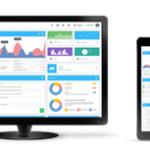
From its early days of text-based HTML content, the web has come a long way. Today, just about anything qualifies as content on the web — from images to video, from HTML text pages to PDF files. While everything qualifies as content, good content is not just about writing or design excellence, but also about how well optimized the content is for the web and for search engines.
Ultimately, however good your content may be, if potential visitors cannot find it through search engines, then it might as well not exist. Optimizing your content is the only way to improve its find-ability. PDF files are no different.
With high bandwidth and advanced web technologies, PDF files have come to be a common and effective way to share anything from promotional brochures to in-depth whitepapers and case studies. When you publish a PDF file on the web, optimizing the PDF file will give it the best chance to be found through search engines.
What is PDF Optimization?
Reducing the file size of PDF files and making them more search engine friendly by optimizing its content and meta data is called PDF optimization. It is an integral part of both web design and search engine optimization and has emerged as an effective way of getting your PDF files found in search results.
How to Optimize PDF for the Web?
Search engines today can read, understand and index the contents of a PDF file just like they do HTML pages, provided they are optimized for search engines. Below are a few tips for optimizing your PDF files for the web:
PDF Optimization Step 1: Search Friendly Content
Whether it is PDF files or HTML based web pages, the core of the page is its content. For visitors to find you in search results, you need to make sure that the content is relevant and written around terms that your target audience finds relevant. Keyword research is one way to find out what your target audience is searching for. Once you have selected the keywords, optimize the content of the document like you would any normal web page.
PDF Optimization Step 2: Content tagging
The full version of Adobe Acrobat lets you use tags just the way you would on an HTML page. This means you can use headings, ALT attributes for images, etc., that you normally would use with normal HTML pages.
PDF Optimization Step 3: Text Based PDF Files
When you are creating the document in Word or any design software, you need to publish it as a PDF file. While publishing the PDF file, you normally have the option of retaining text or converting the text elements into curves or graphic elements. Always ensure that your PDF files are text based and contain text and not curves.
PDF Optimization Step 4: File Name
Remember that your PDF file also will have a URL on the web that search engines access. If your PDF file has a simple English intuitive file name, search engines will be able to associate the PDF file with the file name. Do not ignore the file name while saving the PDF file.
PDF Optimization Step 5: Downward Compatibility
Even if you have the latest version of Acrobat, not all your visitors will have the latest version. Also, search engines cannot crawl and index the content of the latest version. It is always a good idea to save your file in an older version to make it downward compatible and ensure anyone with Acrobat Reader can access its content regardless of the version.
PDF Optimization Step 6: Compression and File Size
Visitors as well as search engines have limited patience to access the content on any page. If the PDF file is very large and takes a long time to download and open, it is unlikely to rank well in search results. Search engines give a lot of importance to page load time and the faster your PDF file downloads, the better it will perform. Make sure you compress and optimize the file size of your PDF file without too much degradation in its visual appeal.
PDF Optimization Step 7: Document Properties
Just like HTML pages have meta data, you can add document properties to PDF files in the form of Titles, Description, Keywords and Author information. The title of the PDF file should ideally be the main heading of the document and should be focused on the core keyword relevant to the document. The Description should be a short summary of the contents of the PDF file and the keywords should contain all the keywords you found through keyword research as being relevant to the document.
PDF Optimization Step 8: Help Crawlers Find Your PDF
Finally, search engines need to be able to find your PDF file in order to crawl and index it. There are many ways to do this. For starters, if you want your PDF file indexed in search results, make sure your PDF file is not behind a form that a visitor has to fill to access it. Search engines cannot fill forms, so they will never be able to find and access the PDF file. Include links to your PDF file in as many locations as meaningfully possible – home page if you can, HTML sitemap, other important landing pages. Make sure the PDF can be reached with as few clicks as possible. Last, you should try and get other sites to link to your PDF file.
Designing PDF documents is today as important as designing websites. Depending on your industry, PDF files could potentially be an extremely powerful marketing tool. Make sure you work with a professional designer who understands PDF optimization.
Professional Web Design Services from Flying Cow Design
Flying Cow Design has a track record of over 20 years of professional web design. What differentiates us from most web design companies is that our focus is not only on web design, but on building a strong online presence for our clients. Understanding the changing web development standards and search engine guidelines has helped us build a strong web presence for many of our clients through a combination of our web design and internet marketing services. To see how we can help you build a strong web presence, write to us today!
CEO, Flying Cow Design
Attended University of Auckland
Lives in San Francisco Bay Area










